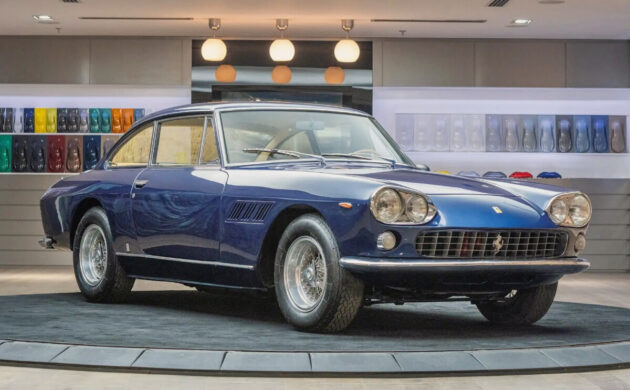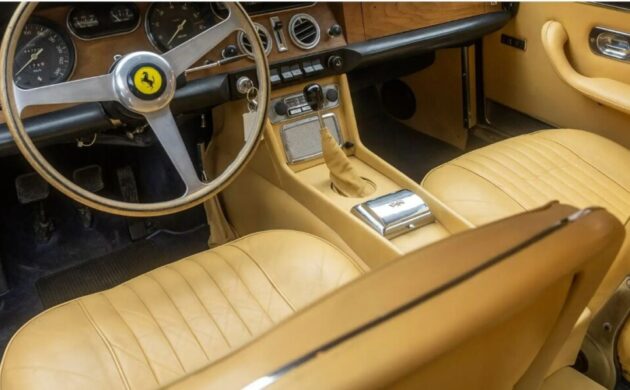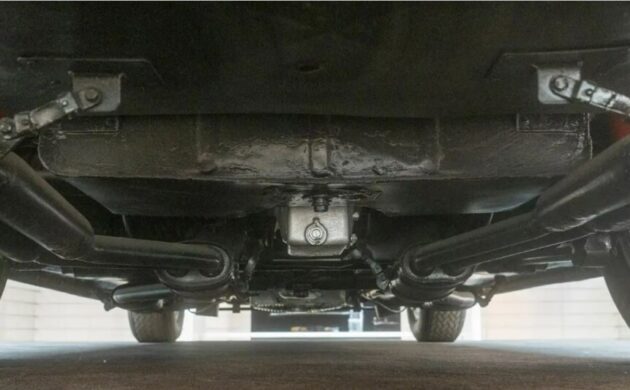In the early 1960s, Ferrari was plotting a successor to its 250 GTE four-seater. The GTE had been its best-selling car to date. To pave the way for the new car, the factory installed a sturdier version of its 4-liter Colombo motor into what was essentially a GTE and called it the 330 America. Fewer than 100 examples were made. The next step towards the new grand touring car was a body redesign, penned by Tom Tjaarda at Pininfarina. The design included quad headlights and a longer wheelbase. The headlights along with a four-speed manual gearbox with overdrive differentiate early cars as Series I examples, while after a phase-in interval with the gearbox, the later Series II cars were designed with a five-speed gearbox and just two headlights. The 330 GT 2+2 was introduced at the Brussels Motor Show in 1964. Here at RM Sotheby’s is a 1964 Ferrari 300 GT 2+2 Series I, going to auction in St. Moritz, Switzerland on September 9, 2022. Thanks to Araknid78 for the tip!
The crown jewel of this model is its 4-liter Tipo 209 Colombo motor, twelve cylinders of silky, sonorous power. Equipped with three twin-choke Webers, this combination made about 300 bhp, propelling the 330 GT from zero to sixty in about 6.7 seconds. That said, as a former owner of one of these cars, it is not a sports car. It is great on the highway and awkward in the twisty bits – at least more awkward than other powerfully expensive choices. While this engine bay looks acceptable, the listing indicates that the car has been sitting in Kuwait stored since 2015 without running. Can you say “expensive”? At least – and this is a big thing – this is a matching numbers example. Borrani wire wheels were standard on the early Series I.
The interior shows minor wear just about everywhere – the switches, fascia, leather seats, dash. Notably, this car has received a color change from Grigio Argento (silver) over Nero to the current Marine Blue over Beige. Below the dash, the pedals also reveal wear. Examination of the listing photos shows paint imperfections, waviness in the grille and front bumper, haziness in the chrome, cracked lenses, and cracked rubber seals, at the least. Aside from the problematic storage situation, there are other issues Ferrari collectors won’t like: no tool roll, no owner’s handbook, missing bits from its ownership history, and no sign of maintenance or restoration receipts. Also, the odo reads 44,722 km, and we don’t know if that is actual mileage or not.
The undercarriage is fairly clean from all sides – this is just one photo supplied. As mentioned, this car is problematic. It is lacking documentation, had a color change, and doesn’t run. Furthermore, the market prefers the prettier Series II cars, when the quad headlights were ditched. The prices of the larger Ferraris have flatlined lately, too. We can guess what this will sell for: put me down at $175,000 USD.





I had a friend with one of these; several years newer. It was stunning in style, but not hair raising performance. Could have gone all day at 120mph though.
Sweet!! Looks great in blue.
About 15 years ago an official Ferrari dealer here had a 250
GT Lusso (62)in red with beige and wire wheels was sold for
120’000 CHF. I dont think that old cars in general will raise
in real higher price levels then their fair market value. The
last of this model i remember was here in about 2006 sold
for 82’000.-
Even the ‘rich’ or the influencers are thinking about this
cv-mess we all know – an overstocked market makes the
pricing go down, a sought market with only a few offers
raise the price. And actually the market is flushed.
Weren’t these a basically unloved model and could be had for dirt cheap – as compared to other Ferrari models – not too long ago?
CHF195,500 | Sold